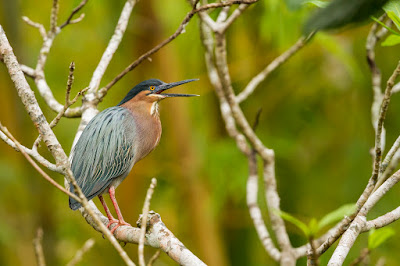Treasures of the Bon Accord Lagoon

Faraaz Abdool discusses how the resident birdlife of Bon Accord Lagoon signals a welcome for visiting species; making this part of Tobago a birdwatchers’ haven. (All photos courtesy Faraaz Abdool; see faraazabdool.com) First published in the Tobago Newsday, March 29, 2018 One of the most densely populated areas in Tobago holds a treasured and under-appreciated secret. In low-lying marshy southwestern Tobago, a vibrant and unique ecosystem supports all forms of life, from crabs that spend all their lives clinging to mangrove roots to birds that fly halfway around the world and back every year. During their breeding season, heightened hormonal levels cause subtle changes in the plumage of some species of Herons such as this Green Heron. The Bon Accord Lagoon and surrounding wetlands have unfortunately been described as “barren” and in need of “development” – as if it isn’t already a complex, functioning system of critical players essential to the survival of not only the



